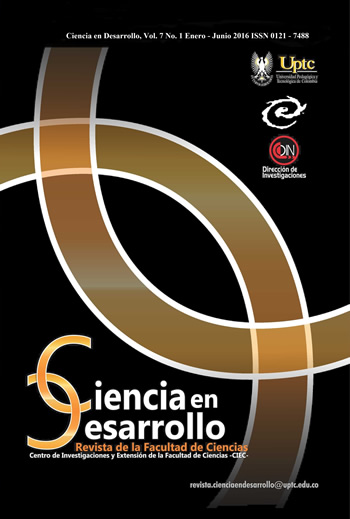Optimal Population Designs for Discrimination Between Two Nested Nonlinear Mixed Effects Models.

Resumen
In this paper we consider the problem of finding optimal population designs for discrimination between
two nested nonlinear mixed effects models which differ in their intra-individual covariance matrix. The
criterion proposed is a generalization of the T-optimality criterion. For this criterion an equivalence theorem is provided. The application of the criterion is illustrated with an example in pharmacokinetic.
Palabras clave
Optimal Designs, Mixed Effects Model, T-Optimal Designs. (Diseños T-óptimos, diseños óptimos, modelo de efectos mixtos.)
Citas
- A. C. Atkinson, and V. V. Fedorov, “The design of experiments for discriminating between two rival models”, Biometrika, vol. 62, pp. 57-70, 1975. DOI: https://doi.org/10.1093/biomet/62.1.57
- K. Bollen, “Estructural Equations with Latents Variables”, John Wiley & Sons, New York, Inc, 1989. DOI: https://doi.org/10.1002/9781118619179
- M. Davidian, and D. M. Giltinan, “Nonlinear Models for Repeated Measurement Data”, Chapman & Hall, London, 1995.
- E. Demidenko, “Mixed Models: Theory and Applications”, John Wiley & Sons Inc, New York, 2004. DOI: https://doi.org/10.1002/0471728438
- V. V. Fedorov, and P. Hackl, “Model-Oriented Design of Experiments”, Springer, New York, 1997. DOI: https://doi.org/10.1007/978-1-4612-0703-0
- R. Gagnon, and S. Leonov, “Optimal population designs for PK models with serial sampling”, Journal of Biopharmaceutical Statistics, vol. 15, pp. 143-163, 2005. DOI: https://doi.org/10.1081/BIP-200040853
- D. Hand, and M. Crowder, “Practical Longitudinal Data Analysis”, Chapman & Hall, London, 1996. DOI: https://doi.org/10.1007/978-1-4899-3033-0
- Y. Hashimoto, and L. Sheiner, “Designs for population pharmacodynamics: value of pharmacokinetic data and population analysis”, Journal of Pharmacokinetics and Biopharmaceutics, vol. 19, pp. 333-353, 1991. DOI: https://doi.org/10.1007/BF03036255
- B. Kuczewski, B. Bogacka, and D. Uci´nski, “Optimum designs for discrimination between two nonlinear multivariate dynamic mixedeffects models”, Biometrical Letters, vol. 45, pp. 1-28, 2008.
- F. Mentré, P. Burtin, Y. Merlé, J. Bree, A. Mallet, and J. Steimer, “Sparse-sampling optimal designs in pharmacokinetics and toxicokinetics”, Drug Information Journal, vol. 29, pp. 997-1019, 1995. DOI: https://doi.org/10.1177/009286159502900321
- F. Mentré, A. Mallet and D. Baccar, “Optimal design in random-effects regression models”, Biometrika, vol. 84, pp. 429-442, 1997. DOI: https://doi.org/10.1093/biomet/84.2.429
- J. C. Pinheiro and D. M. Bates, “Mixed-Effects Models in S and S-PLUS”, Springer, New York, 2000. DOI: https://doi.org/10.1007/978-1-4419-0318-1
- B. N. Pshenichny, “Necessary Conditions for an Extremum”, Marcel Dekker, New York, 1971.
- F. Pukelsheim, Optimal Design of Experiments, John Wiley & Sons Inc, New York, 1993.
- R Development Core Team, R: A Language and Environment for Statistical Computing, R Foundation for Statistical Computing, Vienna,
- Austria, 2014, ISBN 3-900051-07-0, [Online], Available: http://www.R-project.org.
- J. H. Steiger, A. Shapiro, and W. Browne, “Onthe multivariate asymptotic distribution of sequential Chi-Square statistics”, Psychometrika, vol. 50, pp. 253-264, 1985. DOI: https://doi.org/10.1007/BF02294104
- T. W. Stroud, “Fixed alternatives and Wald’s formulation of the noncentral asymptotic behavior of the likelihood ratio statistic”, Annals
- of Mathematical Statistics, vol. 43, pp. 447- 454, 1972. DOI: https://doi.org/10.1214/aoms/1177692625
- D. Uci´nski, and B. Bogacka, “T-optimum designs for multiresponse dynamic heteroscedastic models”, mODa 7- Advances in Modeloriented Design and Analysis, eds A. Di Bucchianico,
- H. L¨auter and H. P. Wynn, pp. 191- 199, Heidelberg: Physica, 2004.
- D. Uci´nski, and B. Bogacka, “T-optimum designs for discrimination between two multiresponse dynamic models”, Journal of the Royal Statistical Society: Series B, vol. 67, pp.3-18, 2005. DOI: https://doi.org/10.1111/j.1467-9868.2005.00485.x
- P. Vajjah, and S. Duffull, “A generalisation of T-optimality for discriminating between competing models with an application to pharmacokinetic studies”, Pharmaceutical Statistics, vol. 11, pp. 503-510, 2012. DOI: https://doi.org/10.1002/pst.1542
- E. F. Vonesh, and V. M. Chinchilli, “Linear and Nonlinear Models for The Analysis of Repeated Measures”, Marcel Dekker, New York,
- T. H. Waterhouse, S. Redmann, S. B. Duffull and J. A. Eccleston, “Optimal design for model discrimination and parameter estimation for itraconazole population pharmacokinetics in cystic fibrosis patients”, Journal of Pharmacokinetics and Pharmacodynamics, vol. 32, pp. DOI: https://doi.org/10.1007/s10928-005-0026-2
- -545, 2005.